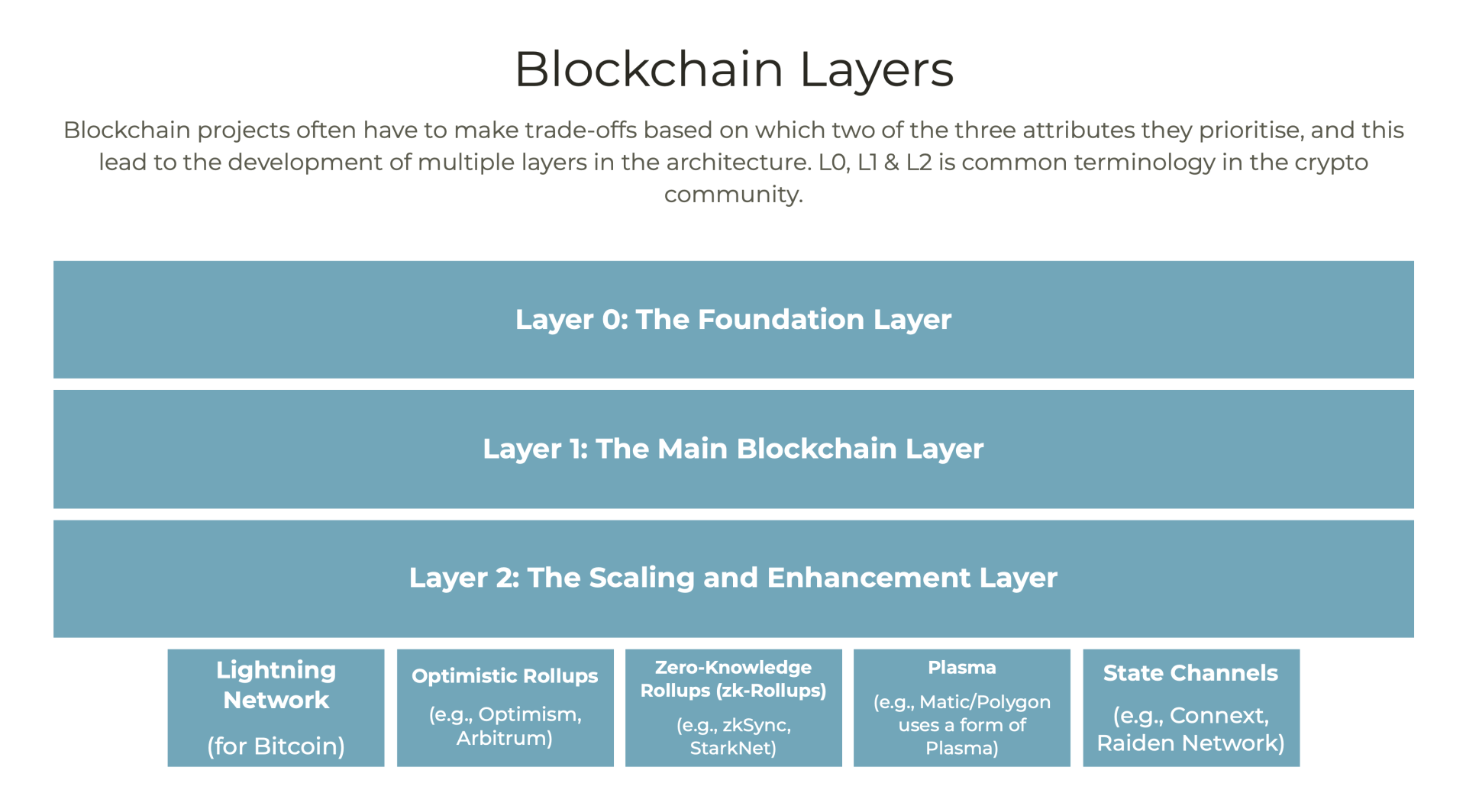In blockchain, “layers” describe the different levels of infrastructure and services that make up the crypto ecosystem. Each layer serves a distinct purpose, from powering the network to enabling user-facing applications. Understanding these layers is key to seeing how the industry fits together—and where opportunities lie.
Layer 0 – The Network Backbone (Foundation Layer)
Layer 0 is the foundation on which blockchains are built. It provides the underlying network infrastructure, enabling multiple Layer 1 blockchains to communicate or share security.
Think of Layer 0 as the “internet cables and servers” of the blockchain world—without it, Layer 1 chains would remain isolated islands.
Layer 1 – The Base Blockchain (Main Layer)
Layer 1 blockchains are the core networks themselves. They maintain consensus, validate transactions, and secure the ledger.
Examples: Bitcoin, Ethereum, Kaspa, Solana
These chains are like operating systems—they provide the rules and infrastructure that applications run on.
When people talk about “the speed of a blockchain” or “how secure it is,” they’re usually talking about Layer 1.
Layer 2 – Scaling Solutions (and Enhancements)
Layer 2 protocols build on top of Layer 1 to improve performance—usually by increasing transaction throughput and reducing fees—while still benefiting from Layer 1 security.
Example:Polygon (built on Ethereum) offers cheaper, faster transactions for dApps.
Example:Lightning Network (for Bitcoin) enables instant, low-cost BTC payments.
Layer 2 is like building an express lane above a busy motorway—it speeds up traffic without changing the road itself.
Layer 3 – The Application Layer
Layer 3 is where most users interact with crypto. This is where decentralised applications (dApps), NFTs, DeFi platforms, and games live.
Examples: Uniswap (DeFi), OpenSea (NFT marketplace), Axie Infinity (blockchain gaming)
Developers at Layer 3 use the infrastructure of Layer 1/2 without worrying about consensus or networking details.
Layer 3 is where the technology becomes usable and visible to everyday people.
The thing to remember about Crypto Layers:
Layers are like building floors—Layer 0 is the foundation, Layer 1 is the structure, Layer 2 are the upgrades, and Layer 3 is where the action happens.



